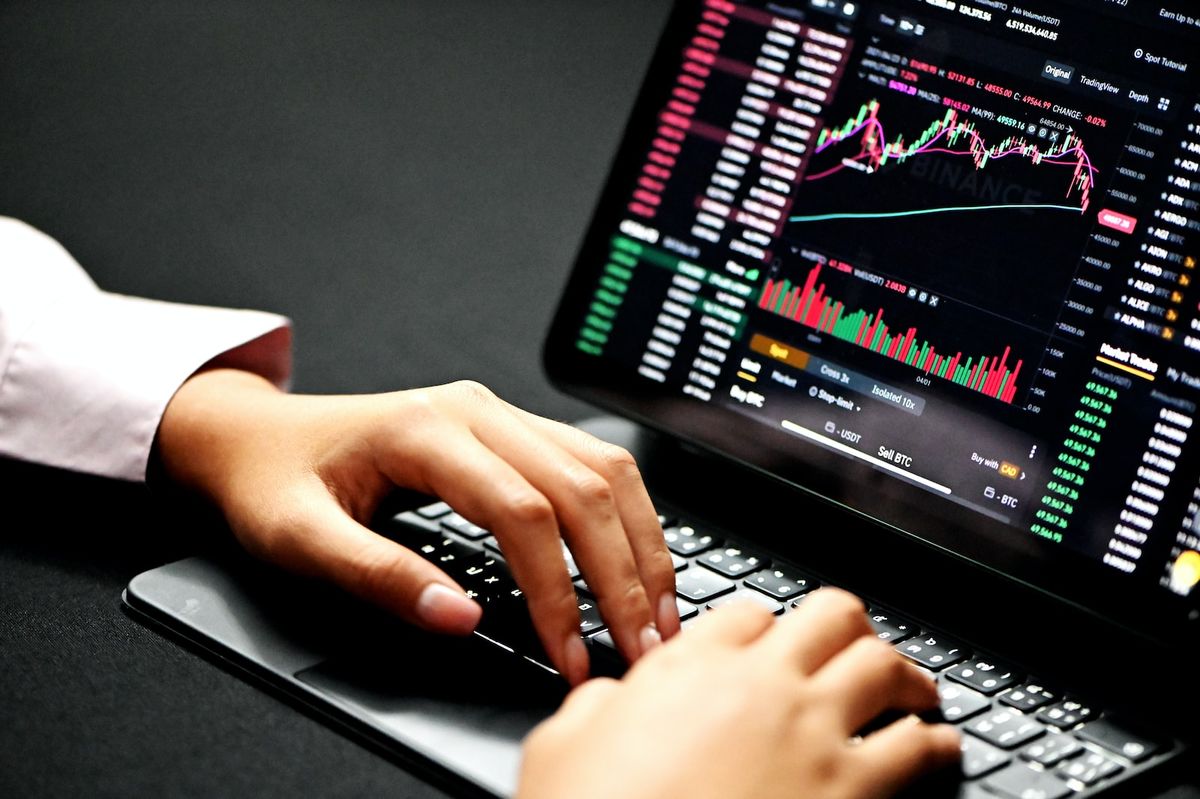The basics of forex trading and how to get started

Forex trading is a great way to make money by taking advantage of the fluctuations in global currency values. It’s easy to get started, and with the right knowledge, you can become a successful trader. This article will provide an overview of the basics of forex trading, including advantages, essential terms, setting up an account, choosing a broker, different types of trading platforms, learning the basics, developing a trading strategy, practicing with a demo account, placing your first trade, managing risk, keeping up with market news, and getting started.
What Is Forex Trading?
Forex trading is the buying and selling of currencies in the foreign exchange market. It is the largest and most liquid financial market in the world, with an average daily trading volume of over $5 trillion. Forex traders make money by taking advantage of the fluctuations in currency values. For example, if a trader buys the US dollar when it is weak against the Euro, they can then sell it when it is strong against the Euro and make a profit.
Advantages of Forex Trading
Forex trading has several advantages over other types of investments. It is highly liquid, meaning that trades can be made quickly and easily. It also has low transaction costs and no commissions. Finally, forex traders can take advantage of leverage, which allows them to trade larger amounts of money with a smaller initial investment.
Essential Forex Trading Terms
Before getting started with forex trading, it is important to understand some of the essential terms. The base currency is the currency that is being bought or sold, while the quote currency is the currency that the base currency is being exchanged for. The spread is the difference between the bid and ask prices. The bid price is the price at which a trader is willing to buy a currency, while the ask price is the price at which a trader is willing to sell a currency.
Setting Up a Forex Trading Account
Once you have decided to start trading forex, the first step is to set up a trading account. This is done by opening an account with a forex broker, who will provide the necessary software and tools for trading. It is important to choose a reputable broker with a good track record.
Choosing a Forex Broker
When choosing a forex broker, it is important to consider the fees, trading platform, customer service, and other features. It is also important to make sure that the broker is regulated by a government regulator and offers trading in the currency pairs that you are interested in.
Different Types of Forex Trading Platforms
Once you have chosen a broker, you will need to select a trading platform. There are several types of trading platforms available, including web-based platforms, desktop platforms, mobile platforms, and automated trading systems. Each type of platform has its own advantages and disadvantages, so it is important to do your research before selecting one.
Learning the Basics of Forex Trading
Before trading, it is important to learn the basics of forex trading. This includes understanding the different types of orders, chart analysis, risk management, and fundamental and technical analysis. There are a variety of resources available online to help you learn the basics of forex trading.
Developing a Trading Strategy
Once you have learned the basics of forex trading, the next step is to develop a trading strategy. This involves deciding on the type of trades to make, the time frame for trading, the amount of risk to take, and the money management rules to follow.
Practicing with a Demo Account
Before trading with real money, it is important to practice with a demo account. A demo account allows you to place trades in a simulated environment with virtual money, so you can get a feel for the different aspects of forex trading without risking your own capital.
Placing Your First Trade
Once you have practiced with a demo account, you can start trading with real money. This involves placing orders with your broker and then monitoring the market to ensure that your trades are going as planned.
Managing Risk in Forex Trading
Risk management is an important part of forex trading. It involves setting stop-loss and take-profit orders, as well as using risk-reward ratios to ensure that you are not taking on too much risk.
Keeping Up with Market News
It is important to keep up with the latest news and developments in the forex market. This includes news about economic events, political developments, and other news that can affect the value of currencies.
Getting Started with Forex Trading
Getting started with forex trading is easy. All you need is a trading account, a trading platform, and the knowledge and skills to make successful trades. With the right knowledge and the right attitude, you can become a successful forex trader.
===OUTRO: Forex trading is a great way to make money by taking advantage of fluctuations in global currency values. With the right knowledge and the right attitude, you can become a successful forex trader. This article has provided an overview of the basics of forex trading, including advantages, essential terms, setting up an account, choosing a broker, different types of trading platforms, learning the basics, developing a trading strategy, practicing with a demo account, placing your first trade, managing risk, keeping up with market news, and getting started.

